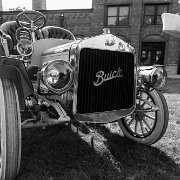
9 Antique Car Festival, Greenfield Villiage, Dearborn, Michigan
The Edison Institute was dedicated by President Herbert Hoover to Ford's longtime friend Thomas Edison on October 21, 1929 – the 50th anniversary of the first successful incandescent light bulb. The attendees included Marie Curie, George Eastman, John D. Rockefeller, Will Rogers, Orville Wright, and about 250 others.[8] The dedication was broadcast on radio with listeners encouraged to turn off their electric lights until the switch was flipped at the Museum.[9]
The Edison Institute was, at first, a private site for educational purposes only, but after numerous inquiries about the complex, it was opened as a museum to the general public on June 22, 1933.[10] It was originally composed of the Henry Ford Museum, Greenfield Village, and the Greenfield Village Schools (an experimental learning facility). Initially, Greenfield Village and the Henry Ford Museum were owned by the Ford Motor Company, which is currently a sponsor of the school and cooperates with the Henry Ford to provide the Ford Rouge Factory Tour. The Henry Ford is sited between the Ford Dearborn Development Center and several Ford engineering buildings with which it shares the same style gates and brick fences.
The Edison Institute was dedicated by President Herbert Hoover to Ford's longtime friend Thomas Edison on October 21, 1929 – the 50th anniversary of the first successful incandescent light bulb. The attendees included Marie Curie, George Eastman, John D. Rockefeller, Will Rogers, Orville Wright, and about 250 others.[8] The dedication was broadcast on radio with listeners encouraged to turn off their electric lights until the switch was flipped at the Museum.[9]
The Edison Institute was, at first, a private site for educational purposes only, but after numerous inquiries about the complex, it was opened as a museum to the general public on June 22, 1933.[10] It was originally composed of the Henry Ford Museum, Greenfield Village, and the Greenfield Village Schools (an experimental learning facility). Initially, Greenfield Village and the Henry Ford Museum were owned by the Ford Motor Company, which is currently a sponsor of the school and cooperates with the Henry Ford to provide the Ford Rouge Factory Tour. The Henry Ford is sited between the Ford Dearborn Development Center and several Ford engineering buildings with which it shares the same style gates and brick fences.

10 Antique Car Festival, Greenfield Villiage, Dearborn, Michigan
The Edison Institute was dedicated by President Herbert Hoover to Ford's longtime friend Thomas Edison on October 21, 1929 – the 50th anniversary of the first successful incandescent light bulb. The attendees included Marie Curie, George Eastman, John D. Rockefeller, Will Rogers, Orville Wright, and about 250 others.[8] The dedication was broadcast on radio with listeners encouraged to turn off their electric lights until the switch was flipped at the Museum.[9]
The Edison Institute was, at first, a private site for educational purposes only, but after numerous inquiries about the complex, it was opened as a museum to the general public on June 22, 1933.[10] It was originally composed of the Henry Ford Museum, Greenfield Village, and the Greenfield Village Schools (an experimental learning facility). Initially, Greenfield Village and the Henry Ford Museum were owned by the Ford Motor Company, which is currently a sponsor of the school and cooperates with the Henry Ford to provide the Ford Rouge Factory Tour. The Henry Ford is sited between the Ford Dearborn Development Center and several Ford engineering buildings with which it shares the same style gates and brick fences.
The Edison Institute was dedicated by President Herbert Hoover to Ford's longtime friend Thomas Edison on October 21, 1929 – the 50th anniversary of the first successful incandescent light bulb. The attendees included Marie Curie, George Eastman, John D. Rockefeller, Will Rogers, Orville Wright, and about 250 others.[8] The dedication was broadcast on radio with listeners encouraged to turn off their electric lights until the switch was flipped at the Museum.[9]
The Edison Institute was, at first, a private site for educational purposes only, but after numerous inquiries about the complex, it was opened as a museum to the general public on June 22, 1933.[10] It was originally composed of the Henry Ford Museum, Greenfield Village, and the Greenfield Village Schools (an experimental learning facility). Initially, Greenfield Village and the Henry Ford Museum were owned by the Ford Motor Company, which is currently a sponsor of the school and cooperates with the Henry Ford to provide the Ford Rouge Factory Tour. The Henry Ford is sited between the Ford Dearborn Development Center and several Ford engineering buildings with which it shares the same style gates and brick fences.

11 Antique Car Festival, Greenfield Villiage, Dearborn, Michigan
The Edison Institute was dedicated by President Herbert Hoover to Ford's longtime friend Thomas Edison on October 21, 1929 – the 50th anniversary of the first successful incandescent light bulb. The attendees included Marie Curie, George Eastman, John D. Rockefeller, Will Rogers, Orville Wright, and about 250 others.[8] The dedication was broadcast on radio with listeners encouraged to turn off their electric lights until the switch was flipped at the Museum.[9]
The Edison Institute was, at first, a private site for educational purposes only, but after numerous inquiries about the complex, it was opened as a museum to the general public on June 22, 1933.[10] It was originally composed of the Henry Ford Museum, Greenfield Village, and the Greenfield Village Schools (an experimental learning facility). Initially, Greenfield Village and the Henry Ford Museum were owned by the Ford Motor Company, which is currently a sponsor of the school and cooperates with the Henry Ford to provide the Ford Rouge Factory Tour. The Henry Ford is sited between the Ford Dearborn Development Center and several Ford engineering buildings with which it shares the same style gates and brick fences.
The Edison Institute was dedicated by President Herbert Hoover to Ford's longtime friend Thomas Edison on October 21, 1929 – the 50th anniversary of the first successful incandescent light bulb. The attendees included Marie Curie, George Eastman, John D. Rockefeller, Will Rogers, Orville Wright, and about 250 others.[8] The dedication was broadcast on radio with listeners encouraged to turn off their electric lights until the switch was flipped at the Museum.[9]
The Edison Institute was, at first, a private site for educational purposes only, but after numerous inquiries about the complex, it was opened as a museum to the general public on June 22, 1933.[10] It was originally composed of the Henry Ford Museum, Greenfield Village, and the Greenfield Village Schools (an experimental learning facility). Initially, Greenfield Village and the Henry Ford Museum were owned by the Ford Motor Company, which is currently a sponsor of the school and cooperates with the Henry Ford to provide the Ford Rouge Factory Tour. The Henry Ford is sited between the Ford Dearborn Development Center and several Ford engineering buildings with which it shares the same style gates and brick fences.

18 Concours d'Elegance of America
The Concours d’Elegance has its roots in 17th century France, when the aristocracy would parade their horse-drawn carriages through the parks of Paris. With the advent of the automobile, Concours d’Elegance events evolved into competitions between automobile manufacturers, custom coachbuilders, and owners, whose vehicles were judged on the beauty of their design.The Concours d’Elegance of America originated at Oakland University’s Meadow Brook Hall, the historic home of Matilda Dodge Wilson, widow of automotive pioneer John Dodge. In 2011 this world-class event moved to the beautiful grounds of the Inn at St. John’s in Plymouth, Michigan.
In keeping with their tradition of showcasing classic, rare and magnificent automobiles, the car selection committee continues to invite a unique collection of vehicles to be displayed. I
The Concours d’Elegance has its roots in 17th century France, when the aristocracy would parade their horse-drawn carriages through the parks of Paris. With the advent of the automobile, Concours d’Elegance events evolved into competitions between automobile manufacturers, custom coachbuilders, and owners, whose vehicles were judged on the beauty of their design.The Concours d’Elegance of America originated at Oakland University’s Meadow Brook Hall, the historic home of Matilda Dodge Wilson, widow of automotive pioneer John Dodge. In 2011 this world-class event moved to the beautiful grounds of the Inn at St. John’s in Plymouth, Michigan.
In keeping with their tradition of showcasing classic, rare and magnificent automobiles, the car selection committee continues to invite a unique collection of vehicles to be displayed. I
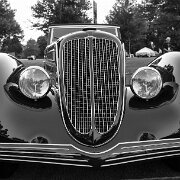
19 Concours d'Elegance of America
The Concours d’Elegance has its roots in 17th century France, when the aristocracy would parade their horse-drawn carriages through the parks of Paris. With the advent of the automobile, Concours d’Elegance events evolved into competitions between automobile manufacturers, custom coachbuilders, and owners, whose vehicles were judged on the beauty of their design.The Concours d’Elegance of America originated at Oakland University’s Meadow Brook Hall, the historic home of Matilda Dodge Wilson, widow of automotive pioneer John Dodge. In 2011 this world-class event moved to the beautiful grounds of the Inn at St. John’s in Plymouth, Michigan.
In keeping with their tradition of showcasing classic, rare and magnificent automobiles, the car selection committee continues to invite a unique collection of vehicles to be displayed. I
The Concours d’Elegance has its roots in 17th century France, when the aristocracy would parade their horse-drawn carriages through the parks of Paris. With the advent of the automobile, Concours d’Elegance events evolved into competitions between automobile manufacturers, custom coachbuilders, and owners, whose vehicles were judged on the beauty of their design.The Concours d’Elegance of America originated at Oakland University’s Meadow Brook Hall, the historic home of Matilda Dodge Wilson, widow of automotive pioneer John Dodge. In 2011 this world-class event moved to the beautiful grounds of the Inn at St. John’s in Plymouth, Michigan.
In keeping with their tradition of showcasing classic, rare and magnificent automobiles, the car selection committee continues to invite a unique collection of vehicles to be displayed. I
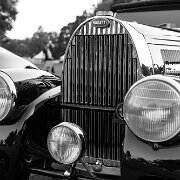
20 Concours d'Elegance of America
The Concours d’Elegance has its roots in 17th century France, when the aristocracy would parade their horse-drawn carriages through the parks of Paris. With the advent of the automobile, Concours d’Elegance events evolved into competitions between automobile manufacturers, custom coachbuilders, and owners, whose vehicles were judged on the beauty of their design.The Concours d’Elegance of America originated at Oakland University’s Meadow Brook Hall, the historic home of Matilda Dodge Wilson, widow of automotive pioneer John Dodge. In 2011 this world-class event moved to the beautiful grounds of the Inn at St. John’s in Plymouth, Michigan.
In keeping with their tradition of showcasing classic, rare and magnificent automobiles, the car selection committee continues to invite a unique collection of vehicles to be displayed. I
The Concours d’Elegance has its roots in 17th century France, when the aristocracy would parade their horse-drawn carriages through the parks of Paris. With the advent of the automobile, Concours d’Elegance events evolved into competitions between automobile manufacturers, custom coachbuilders, and owners, whose vehicles were judged on the beauty of their design.The Concours d’Elegance of America originated at Oakland University’s Meadow Brook Hall, the historic home of Matilda Dodge Wilson, widow of automotive pioneer John Dodge. In 2011 this world-class event moved to the beautiful grounds of the Inn at St. John’s in Plymouth, Michigan.
In keeping with their tradition of showcasing classic, rare and magnificent automobiles, the car selection committee continues to invite a unique collection of vehicles to be displayed. I

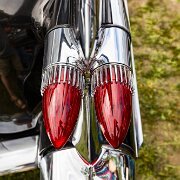




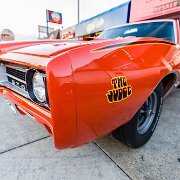

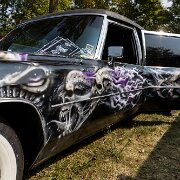


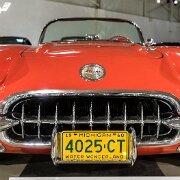
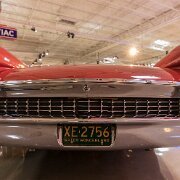

Cars